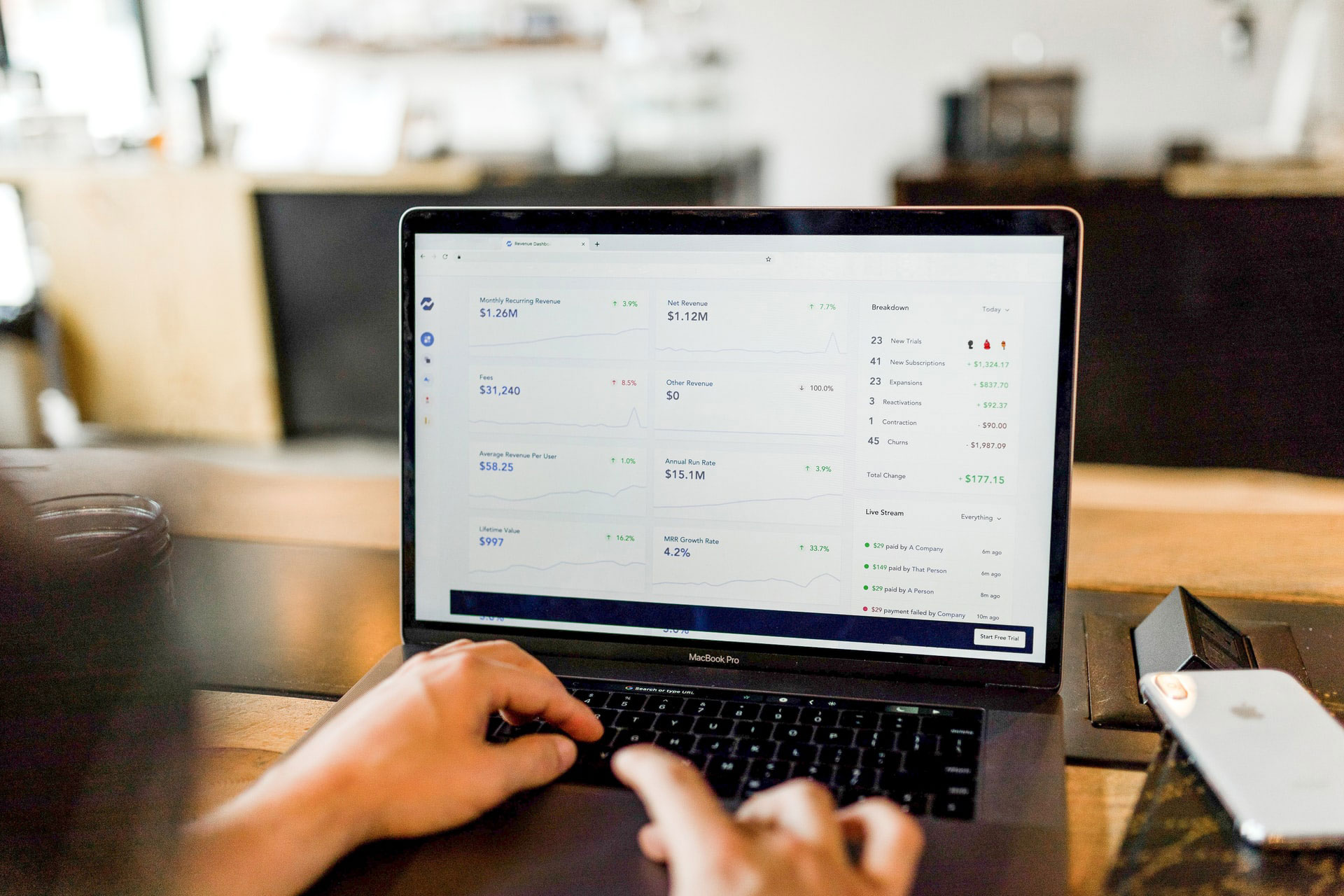FintechZoom.com | Your Gateway to Financial Insights
- Home
-
Stocks Updates
- News
-
Finance Tools
- Crypto Profit Calculator
- Savings Goal Calculator
- Compound Interest Calculator
- Currency Converter
- Tax Calculator
- Retirement Planner
- Net Worth Tracker
- Investment Portfolio Calculator
- Credit Card Payoff Calculator
- Monthly Budget Planner
- Mortgage Affordability Calculator
- Debt-to-Income (DTI) Ratio Calculator
- Fuel Cost Calculator
- Stock Return Calculator
- Loan EMI Calculator
- Latest Blogs
- Jobs Updates
Cybersecurity in Finance – FintechZoom Official’s Guide
 Cybersecurity in Finance - FintechZoom Official's Guide
Cybersecurity in Finance - FintechZoom Official's GuideTable of Contents
Introduction – The Critical Role of Cybersecurity in Finance
Banks and other financial organizations handle sensitive data like account numbers, transaction records, and customer identities. Cybercriminals target this data to steal money, cause damage, or sell information on illegal platforms. Finance is one of the most targeted sectors in cybercrime today. With the increase in online services, mobile banking, and digital payment systems, the risk has grown.
Table of Contents
- Table of Contents
- Introduction – The Critical Role of Cybersecurity in Finance
- Recent incidents affecting financial data
- How FintechZoomOfficial.com is helping reshape cyber resilience
- Biggest Cyber Threats Targeting Financial Firms
- Ransomware, data breaches, and API exploits
- Social engineering & insider threats
- Third-party and supply-chain vulnerabilities
- Impact of Cyber Threats on Financial Institutions
- Financial losses and legal penalties
- Regulatory consequences and compliance failures
- Customer trust, brand reputation, and market position
- Frameworks and Regulations Powering Cyber Resilience
- NIST Cybersecurity Framework 2.0 & Global Standards
- EU’s DORA (Digital Operational Resilience Act)
- RBI and Global Financial Cybersecurity Directives
- Best Practices: How Financial Firms Can Fortify Security
- Zero-trust Architecture and Identity Access Strategies
- Encryption, SIEM, EDR/XDR, Threat Intelligence
- Vendor Risk Management and Continuous Monitoring
- Emerging Technology: Risks & Opportunities
- Artificial Intelligence for fraud prevention
- Preparing for quantum-resistant encryption
- Generative AI abuse by attackers
- Case Studies – Lessons from Real Attacks
- Qantas social engineering incident
- UK banks’ proactive testing and simulation exercises
- SWIFT-style incidents: financial infrastructure under threat
- Common Challenges in Financial Cybersecurity
- Outdated legacy systems and cloud migration gaps
- Cybersecurity skill gaps and budget issues
- Balancing compliance with digital innovation
- Future Outlook: The Evolution of Financial Cybersecurity
- Strengthening resilience via regulation and threat sharing
- Continued adoption of AI, quantum, blockchain
- Cybersecurity in embedded finance and fintech ecosystems
- Why FintechZoom Official Matters in This Discussion
- Our Expert Insights and In-Depth Analysis
- Tools, Templates, and Threat-Assessment Frameworks
- How We Support Financial Firms Build Stronger Cyber Defenses
- Conclusion & Action Plan
- Key takeaways for Finance/CISO leaders
- 5‑step cybersecurity readiness checklist
- Invitation: Get your free consultation from FintechZoomOfficial.com
- FAQS
- What is cybersecurity in finance?
- Why are financial institutions targeted by hackers?
- What are the most common cyber attacks in the finance sector?
- How can phishing harm a bank or fintech firm?
- What is a zero-trust security model?
- How can AI help improve cybersecurity in finance?
- What is the impact of a data breach on a financial company?
- What is DORA and why is it important?
- What is the role of employees in cybersecurity?
- How can companies protect against insider threats?
- What should financial firms do before working with vendors?
- How often should financial systems be tested for security?
- Can small finance companies face cyber attacks too?
- What tools help detect cyber threats early?
- How does FintechZoom Official support finance cybersecurity?
Recent incidents affecting financial data
In recent years, several companies have suffered attacks that exposed millions of records. In one case, a single phone call tricked an employee into giving access to a system. In other events, attackers used fake emails to steal passwords. These problems have affected large institutions and small businesses alike, proving that no one is completely safe.
How FintechZoomOfficial.com is helping reshape cyber resilience
FintechZoomOfficial shares updated and practical information on finance and technology. By reporting security trends, publishing expert insights, and offering planning tools, our platform supports finance professionals in managing digital risks effectively.
Biggest Cyber Threats Targeting Financial Firms
Financial firms are common targets for cybercriminals due to the sensitive information they manage. These companies face different types of attacks, including ransomware, phishing, and data theft. Cyber threats can come from outside hackers or even internal employees. This part of the blog covers the main cyber threats that financial companies deal with today.
Ransomware, data breaches, and API exploits
Ransomware is one of the most damaging types of attacks. Hackers lock important files and ask for money to unlock them. In data breaches, large amounts of private data are stolen. APIs, which allow apps to share data, can be misused if they are not built securely. These issues affect both banks and modern fintech systems.
Social engineering & insider threats
Some attacks don’t involve software or code. Instead, attackers use tricks to fool people. A fake phone call or email can be enough to cause damage. In other cases, someone inside the company causes a problem. This can happen by accident or on purpose. These insider threats are hard to detect without proper monitoring.
Third-party and supply-chain vulnerabilities
Many financial firms work with outside companies for IT services, payment processing, or customer support. If one of these vendors has weak security, it can affect the main company too. Hackers often use this indirect method to gain entry.
Impact of Cyber Threats on Financial Institutions
When a financial company is hit by a cyber attack, the results can be serious. They may lose money, face legal trouble, or damage their relationship with customers. These incidents can also lead to stricter government rules and reduced public trust. In this section, we will look at the real impact that cyber threats have on finance businesses.
Financial losses and legal penalties
A successful cyber attack can lead to huge financial damage. Hackers may transfer money out, steal customer data, or stop systems from working. On top of this, companies often face lawsuits or have to pay fines if they fail to protect data properly.
Regulatory consequences and compliance failures
Every country has rules about how financial data should be protected. Companies that don’t follow these rules may face investigations or penalties. These rules include DORA in the EU, RBI guidelines in India, and others around the world.
Customer trust, brand reputation, and market position
When customers find out that their data was exposed or stolen, they often lose trust in the company. This can hurt the brand’s reputation and reduce its customer base. Recovery from this kind of damage can take years.
Frameworks and Regulations Powering Cyber Resilience
To deal with cyber threats, many governments and organizations have created security frameworks and rules. These guidelines help financial companies keep their systems and data protected. This section explains some of the most important regulations and how they support better cybersecurity in the financial industry.
NIST Cybersecurity Framework 2.0 & Global Standards
The NIST Cybersecurity Framework 2.0 provides a structured method for companies to plan, protect, detect, respond, and recover from cyber threats. It is a key part of improving cybersecurity in finance, especially for organizations that need a clear system for handling risk. Many financial firms rely on this framework because it is widely accepted and flexible across different business sizes.
EU’s DORA (Digital Operational Resilience Act)
DORA plays an important role in cybersecurity in finance across Europe. This regulation asks financial institutions to regularly test their digital systems and stay ready for unexpected events. It also puts strong focus on third-party risks and how firms handle cyber incidents. DORA helps build better digital strength for banks, fintech firms, and other financial companies.
RBI and Global Financial Cybersecurity Directives
Across different countries, rules for cybersecurity in finance are being updated to meet modern challenges. The Reserve Bank of India (RBI) has issued strict policies, including the use of zero-trust systems and continuous testing. Similar steps are being taken by other national regulators to improve protection in the financial industry.
Best Practices: How Financial Firms Can Fortify Security
Every financial company needs strong security practices to stay protected. From checking employee access to using smart monitoring tools, there are many steps that can reduce cyber risks. In this part of the blog, we share practical methods that can help finance teams build stronger defenses.
Zero-trust Architecture and Identity Access Strategies
In cybersecurity in finance, zero-trust is a key approach. It means that no user or device is trusted by default, whether inside or outside the system. Every identity must be verified before access is given. This model helps reduce cyber risk and adds strong control over who can enter sensitive areas of a financial system.
Encryption, SIEM, EDR/XDR, Threat Intelligence
Strong cybersecurity in finance includes using encryption and smart monitoring tools. All data must be encrypted when stored or moved. SIEM tools review security logs to detect problems. EDR and XDR systems find threats early, helping companies act fast. Threat intelligence adds another layer by helping teams stay aware of what kinds of attacks are spreading.
Vendor Risk Management and Continuous Monitoring
Cybersecurity in finance also involves checking third-party vendors closely. Before hiring outside service providers, financial institutions should review their security setups. Monitoring systems 24/7 is just as important. It allows teams to detect suspicious activity before it causes serious damage.
Emerging Technology: Risks & Opportunities
New technologies are changing the way finance and cybersecurity work together. While these tools offer better ways to spot problems, they also create new risks. This section explores how tools like AI and quantum computing are shaping the future of financial cybersecurity.
Artificial Intelligence for fraud prevention
AI is being used by banks and fintech firms to catch fraud faster. It can study patterns and highlight suspicious activity in real-time.
Preparing for quantum-resistant encryption
Quantum computers are still in development, but they could break current encryption methods. Many companies are now looking into new encryption techniques that will be safe even when quantum computing becomes common.
Generative AI abuse by attackers
Attackers are using AI to create fake emails, voices, and videos. These look real and can trick people more easily than before. This is a growing risk.
Case Studies – Lessons from Real Attacks
Real-world examples often teach us the most about what works and what doesn’t. This section shares case studies where financial firms were attacked. Each case offers a clear lesson about how to improve protection and avoid the same mistakes.
Qantas social engineering incident
An airline company’s employee was tricked by a fake caller pretending to be an IT officer. This small mistake gave hackers access to sensitive systems.
UK banks’ proactive testing and simulation exercises
Some banks in the UK now run fake cyber attack drills to test how their staff respond. These tests help prepare for real attacks.
SWIFT-style incidents: financial infrastructure under threat
SWIFT is a system used to send money between countries. In some cases, attackers gained access to this network and made fake money transfers. These incidents pushed companies to improve access controls.
Common Challenges in Financial Cybersecurity
Many finance companies face challenges that make it hard to keep their systems secure. Some use outdated software, while others don’t have enough trained staff. This part of the blog explains the common problems that financial teams deal with when trying to improve cybersecurity.
Outdated legacy systems and cloud migration gaps
Many companies still use old software. This software may not support modern security tools. Moving to cloud systems brings new risks if not done carefully.
Cybersecurity skill gaps and budget issues
There are not enough trained cybersecurity experts. Hiring is expensive and time-consuming. Small firms often don’t have big budgets for strong defenses.
Balancing compliance with digital innovation
While growing and adding new digital services, companies must still follow rules and stay safe. This balance is not always easy.
Future Outlook: The Evolution of Financial Cybersecurity
The future of financial cybersecurity is expected to include smarter tools and stronger rules. As threats continue to grow, companies will need to update their systems and strategies. This section looks ahead to what changes are coming and how they may affect financial security.
Strengthening resilience via regulation and threat sharing
Financial firms are starting to share threat information with each other and with regulators. This helps spot problems earlier and build stronger defenses.
Continued adoption of AI, quantum, blockchain

New technologies will play a big role in both protection and risk. Using them wisely will help companies stay one step ahead of attackers.
Cybersecurity in embedded finance and fintech ecosystems
As digital payments and online finance grow, cyber protection becomes a daily need. Cybersecurity is no longer just an IT issue—it’s a core part of business planning.
Why FintechZoom Official Matters in This Discussion
FintechZoom Official plays an active role in supporting safer finance systems. Our platform offers useful content, industry updates, and expert tips to help companies stay alert. This part of the blog explains how FintechZoomOfficial supports financial professionals and their security goals.
Our Expert Insights and In-Depth Analysis
At FintechZoomOfficial, we share expert insights to support better cybersecurity in finance. Our updates, research, and practical content help financial professionals understand digital risks. We simplify complex topics so that teams can make informed and safer decisions.
Tools, Templates, and Threat-Assessment Frameworks
We offer tools that strengthen cybersecurity in finance—including guides, templates, and frameworks. These resources help security teams build clear action plans, stay focused on threats, and reduce risk with step-by-step approaches.
How We Support Financial Firms Build Stronger Cyber Defenses
FintechZoomOfficial plays a valuable role in improving cybersecurity in finance. Our platform delivers useful reports, blog content, and digital strategy tools that help banks, fintech firms, and other financial institutions protect their systems and customers more effectively.
Conclusion & Action Plan
Cybersecurity in finance requires more than just software—it needs clear planning and strong habits. Financial companies must follow simple, daily actions to protect systems, staff, and data. This section shares a practical plan and encourages readers to explore more guidance from FintechZoomOfficial to stay ahead of risks.
Key takeaways for Finance/CISO leaders
- Cyber threats in finance are real and growing
- Threats come from inside, outside, and third-party systems
- Clear policies, tools, and training can reduce risk
5‑step cybersecurity readiness checklist
- Use multi-factor login systems
- Keep all systems updated
- Train staff on cyber awareness
- Monitor for strange behavior 24/7
- Check vendor security before onboarding
Invitation: Get your free consultation from FintechZoomOfficial.com
If you want to build a stronger cybersecurity plan for your company, explore the l
atest tools and expert articles at FintechZoomOfficial.com. Our goal is to help you stay ready, alert, and informed
FAQS
What is cybersecurity in finance?
Cybersecurity in finance refers to the tools and methods used by banks, fintech firms, and financial services to protect systems, data, and transactions. It helps reduce the risk of hacking, fraud, and data leaks.
Why are financial institutions targeted by hackers?
Hackers target financial institutions because they deal with money and sensitive information. Strong cybersecurity in finance is needed to protect against theft, fraud, and system disruptions.
What are the most common cyber attacks in the finance sector?
Common attacks in cybersecurity in finance include phishing, ransomware, insider threats, and third-party breaches. These attacks aim to steal data or access systems.
How can phishing harm a bank or fintech firm?
Phishing is a major concern in cybersecurity in finance. It tricks people into sharing private information, which allows attackers to get into accounts or internal systems.
What is a zero-trust security model?
Zero-trust is a key part of cybersecurity in finance. It means no one is trusted automatically. Every user and device must be verified before being allowed access.
How can AI help improve cybersecurity in finance?
AI supports cybersecurity in finance by detecting strange activity, learning behavior patterns, and catching threats early. This helps financial firms respond faster and prevent damage.
What is the impact of a data breach on a financial company?
A data breach can lead to money loss, legal trouble, and loss of customer trust. The company may also face fines and damage to its reputation.
What is DORA and why is it important?
DORA (Digital Operational Resilience Act) is a European rule that asks financial companies to test and strengthen their digital systems regularly. It helps reduce cyber risks.
What is the role of employees in cybersecurity?
Employees play a big role in keeping systems safe. They need regular training to spot fake emails, avoid mistakes, and report anything unusual.
How can companies protect against insider threats?
They can set strict access controls, monitor internal actions, and provide security training. Insider risks are reduced when systems are properly watched.
What should financial firms do before working with vendors?
Firms should check the vendor’s security practices and make sure they follow safety rules. Weak vendors can become a backdoor for cyber attacks.
How often should financial systems be tested for security?
Testing should be done regularly. Many firms test their systems every few months and also run surprise checks to find weak points.
Can small finance companies face cyber attacks too?
Yes, small companies are often targeted because they may have weaker protection. All finance firms, large or small, need strong security.
What tools help detect cyber threats early?
Tools like firewalls, SIEM systems, and threat monitoring software help track problems as they happen and send alerts before harm is done.
How does FintechZoom Official support finance cybersecurity?
FintechZoom Official offers updated blogs, guides, and research to help companies stay safe, learn about threats, and apply better protection methods.














No Comments